Starting at 100 points with only 2 listed stocks REE and SAM, VN-Index has become a "compass" to measure the stock price movements of enterprises listed on HoSE. This index is used to determine the growth of current capitalization value compared to the capitalization value at the base time.
The period 2000-2006 witnessed the first steps of the market. VN-Index gradually grew, reaching 751.77 points at the end of 2006. The method of calculating VN-Index laid the foundation for the development of HoSE's stock index set later.
2012 marked an important milestone with the launch of the VN30 index, representing the 30 stocks with the largest capitalization and highest liquidity on HoSE. In particular, VN30 was designed with a calculation method inherited and improved compared to VN-Index, marking an important step forward in standardizing the index according to international practices.
While VN-Index is calculated based on the total listed capitalization value, VN30 applies the free-float ratio and uses the actual outstanding share volume instead of the listed volume. This method helps reflect the real market value that can be traded, eliminating the capital that is restricted from trading such as state-owned shares or strategic shareholders. Thanks to that, VN30 provides a more realistic picture of market fluctuations and becomes an additional reference tool for many domestic and foreign individual/institutional investors in the stock market.
Also in 2012, HoSE established the Ho Chi Minh City Stock Exchange Index Council, consisting of financial and economic experts, which plays an important role in advising HoSE on the strategy of building indices and index sets.
The 2016-2020 period continued to witness a strong breakthrough in the Vietnamese stock market. The VN-Index surpassed its historical peak in 2007 for the first time, reaching 1,200 points in early 2018. In particular, this was the period when the HoSE index system was significantly expanded with the introduction of many important indexes:
- The market capitalization-based indices: VN100 (100 largest capitalization stocks), VNMidcap (mid-cap stocks) and VNSmallcap (small-cap stocks) were born, supplementing VN30 and VN-Index, helping to segment the market more clearly.
- Industry indices: VNFIN, VNREAL, VNIND, VNCONS, VNUTI... are introduced, helping investors track the developments of each specific industry. In particular, these industry indices are built according to the GICS (Global Industry Classification Standard) of MSCI, which is one of the industry classification standards widely recognized globally. This helps improve comparability and compliance with international standards, while creating favorable conditions for foreign investors when accessing the Vietnamese stock market.
- Investment indices/thematic indices: VNDIAMOND (group of stocks meeting foreign ownership limit), VNFINLEAD (leading financial sector), VNFINSELECT (financial sector selection), VNSI (sustainable development) are also announced, meeting different investment strategies. Notably, the VNSI index is built according to GRI (Global Reporting Initiative) standards, a globally recognized sustainability reporting framework. Compliance with GRI standards helps the VNSI index comprehensively assess environmental, social and corporate governance factors, creating a solid foundation for sustainable investment products in Vietnam.
- The VNX Allshare and VNX50 general indices were jointly developed by HoSE and HNX, reflecting stock price fluctuations of listed companies on both exchanges, contributing to improving the consistency and standardization of the indicator system for the entire market, while creating a basic index to develop financial products such as ETFs.
This diversification has created a comprehensive picture of the developments of each market segment, effectively supporting investment decisions and the development of new financial products. After 25 years of development, the HoSE index system has built a diverse and comprehensive ecosystem from capitalization-based indexes (VN30, VN100, VNMidcap, VNSmallcap), to industry indexes (VNFIN, VNIND, VNREAL, VNCONS, ...), investment indexes/theme indexes (VNDIAMOND, VNFINLEAD, VNFINSELECT, VNSI) and general indexes (VNX50, VNXAllshare).
To date, the new indices of HoSE have significantly improved their calculation methods. In addition to applying the index calculation method based on the capitalization value adjusted for the free-float ratio, these indices also apply a weight limit (usually 10-15%) for each component stock, avoiding excessive domination by large-cap stocks, and at the same time, implementing a strict periodic review and portfolio restructuring process every 6 months.
These improvements help HoSE's new indices increasingly approach international standards, enhance representativeness and transparency in reflecting market developments, as well as create a solid foundation for the development of derivative financial products such as index futures contracts, index-based ETFs, and covered warrants.
 |
Looking at the chart “Number of ETF codes referenced by index over the years” and “Growth of AUM (Assets Under Management) of ETFs according to index over the years”, we can see the strong development of ETF products based on the HoSE index system. From only 1 ETF code referenced by VN30 index in the period 2014-2016, by March 2025, the number of ETFs had increased to 17 ETF codes referenced by 7 different indexes, the total AUM of ETF funds from 359 billion VND in 2015 grew to more than 30,000 billion VND in 2022, specifically:
 |
· VN30 : A pioneer index with reference ETFs since 2014. The number of ETFs referenced VN30 increased from 1 code in the period 2014-2019 to 3 codes in 2020 and stabilized at 4 codes from 2021 to present, contributing largely to the AUM structure over the years. AUM has grown continuously from VND 359 billion in 2015 to VND 11,800 billion in 2021 and maintained at VND 8,000-9,000 billion from 2022. This shows the maturity and stability of the blue-chip segment.
· VNX50 : Started having reference ETF since 2017 with 1 code, and increased to 2 codes from 2022 to present.
· VNFINLEAD : Reference ETF appeared in 2019 and maintained 01 code stably over the years, reflecting investment demand in the leading group of the financial industry.
· VNDIAMOND : The index with the most impressive ETF growth, from 01 code in 2019 to 06 codes in March 2025, AUM continuously grew from 5,280 billion VND in 2020 to more than 18,000 billion VND in 2022 and maintained at 12,000-13,000 billion from 2023. This growth reflects the great interest of investors in the group of stocks that meet the foreign ownership limit.
· VN100 : Has a reference ETF since 2019 and has been stable at 02 codes from 2020 to present.
· VNMIDCAP and VNFINSELECT : Starting to have reference ETFs from 2021, each index maintains 1 stable ETF code over the years.
The sharp increase in the number of ETFs and AUM of ETFs referenced by different indices reflects the maturity and diversification of the Vietnamese stock market. This trend demonstrates the growing confidence of investors in passive investment products, while affirming the effectiveness and transparency of the HoSE index system in reflecting market developments. Notably, this statistic also shows that investment trends are increasingly diversified, from the traditional large-cap segment expanding to specialized investment strategies such as stocks with limited foreign room or focusing on the financial sector.
In the next development phase, HoSE will continue to perfect the index system with many new directions. The focus is on developing and diversifying indexes according to specific investment strategies such as thematic indexes, high dividend indexes, growth indexes, etc. At the same time, HoSE will research ESG indexes to meet global sustainable investment trends, focusing on environmental, social and corporate governance criteria, providing more reference tools for investors.
The 25-year development of the stock index system at HoSE is a journey from a single VN-Index to the current comprehensive index ecosystem. The indexes have become the "compass" for market orientation and the development platform for many financial products, contributing to the diversification of investment tools and risk management. With the solid foundation built, the HoSE index system will continue to develop, anticipate global financial trends, provide effective reference tools for the investment community and contribute to the sustainable development of the Vietnamese stock market.
Source: https://nhandan.vn/hanh-trinh-hose-25-nam-nang-gia-tri-vung-niem-tin-phat-trien-va-hoan-thien-he-thong-chi-so-cho-thi-truong-chung-khoan-post875553.html





![[Photo] Ho Chi Minh City holds funeral for former President Tran Duc Luong](https://vphoto.vietnam.vn/thumb/1200x675/vietnam/resource/IMAGE/2025/5/24/9c1858ebd3d04170b6cef2e6bcb2019e)

![[Photo] The Government Standing Committee works with ministries and branches on the real estate market situation.](https://vphoto.vietnam.vn/thumb/1200x675/vietnam/resource/IMAGE/2025/5/24/e9b5bc2313d14c9499b8c9b83226adba)




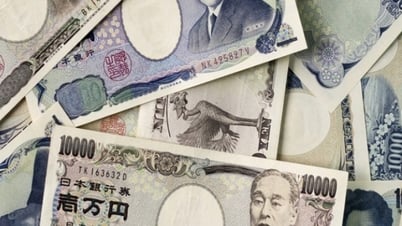

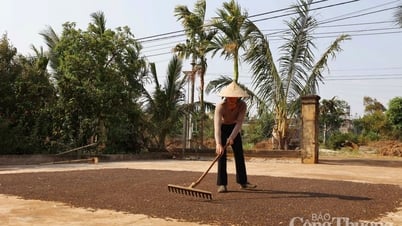









![[Photo] The Government Standing Committee works with ministries and branches on the real estate market situation.](https://vphoto.vietnam.vn/thumb/402x226/vietnam/resource/IMAGE/2025/5/24/e9b5bc2313d14c9499b8c9b83226adba)


![[Photo] Party and State leaders visit former President Tran Duc Luong](https://vphoto.vietnam.vn/thumb/1200x675/vietnam/resource/IMAGE/2025/5/24/960db9b19102400e8df68d5a6caadcf6)

































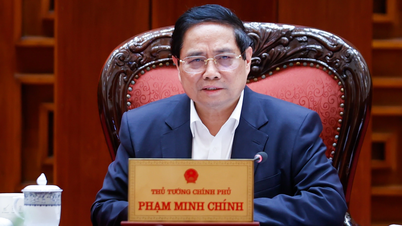















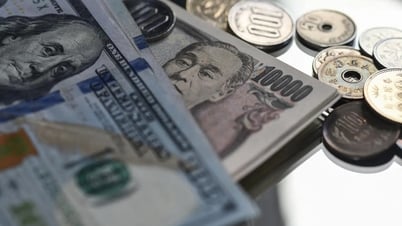

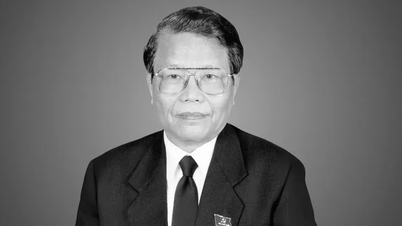













Comment (0)